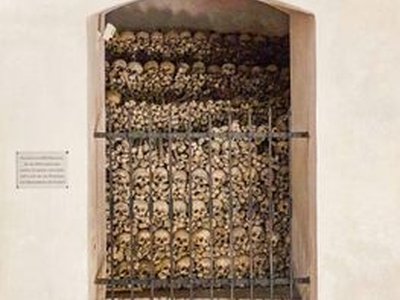St. Florian Ossuary


Calling St. Florian Ossuary the
personal charnel of Austrian composer Anton Bruckner might be a stretch. It might also sound like he killed everyone and buried their bones in a crypt for his own pleasure. The reality is not quite so exciting.
When Bruckner was only 13 years old, his father died and he was sent to St. Florian Monastery. There, he began a love affair with the St. Florian organ, often playing during church services. Throughout his life it was his favorite organ, and when he died, it made sense to bury him beneath the monastery, and the instrument he loved.
Although the crypt now serves as a memorial to Bruckner, the charnel was not created for him. Instead, the rows of skulls and bones happened to frame the later tomb that was built in 1896. The remains of 6,000 people are used in the creation of the rows of stacked skulls in St. Florian’s crypt. According to most accounts, the skulls belonged to early Christians who wished to be buried close to St. Florian, a Roman martyr, and the patron saint of protection against fire and flood.
For more information on amazing ossuaries, charnels and skeletal remains around the world, visit Paul Koudounaris’ website
Empire de la Mort
, or purchase his definitive book
The Empire of Death: A Cultural History of Ossuaries and Charnel Houses
.